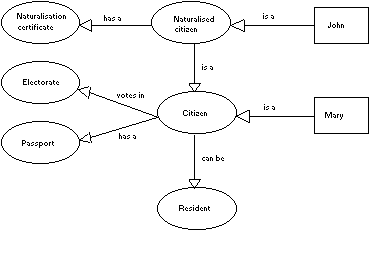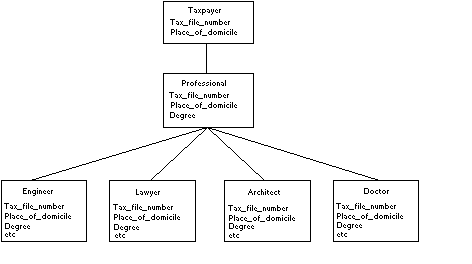BAILII is celebrating 24 years of free online access to the law! Would you
consider making a contribution?
No donation is too small. If every visitor before 31 December gives just ÂŁ1, it
will have a significant impact on BAILII's ability to continue providing free
access to the law.
Thank you very much for your support!
 |
[Home]
[Databases]
[World Law]
[Multidatabase Search]
[Help]
[Feedback]
|
United Kingdom Journals
|
You are here:
BAILII >>
Databases >>
United Kingdom Journals >>
John Zeleznikow and Dan Hunter,<B> </B><I>Building Intelligent Legal Information Systems: Representation and Reasoning in Law
URL: http://www.bailii.org/uk/other/journals/WebJCLI/1996/issue2/aiken2.html
Cite as:
John Zeleznikow and Dan Hunter,<B> </B><I>Building Intelligent Legal Information Systems: Representation and Reasoning in Law
|
[New search]
[Help]


![[1995] 2 Web JCLI](../../images/thisissu.gif)


John Zeleznikow and Dan
Hunter, Building Intelligent
Legal Information Systems:
Representation and Reasoning in
Law
Deventer: Kluwer 1994, 351 pp, ISBN 90 6544 8330, Softback Ł69.
Reviewed by Michael Aikenhead
Research Assistant and Postgraduate Student
The Centre for Law and Computing
University of Durham.
Copyright © 1996 Michael Aikenhead.
First Published in Web Journal of Current Legal Issues in association with Blackstone
Press Ltd.
"It is our view that no legal professional of the twenty-first century can
afford to be without automated legal support systems. To help provide
professionals with useful advice we have written this book to cut away
some of the hype, frenzy, misinformation and mystique about intelligent
legal support systems. It is our aim to destroy the myths and fears lawyers
have about computers (p 1)."
In their Introduction, Zeleznikow and Hunter state their aim as "to destroy the myths
and fears lawyers have about computers". A facetious response might be: "Lawyers
have nothing to fear from automation, who would want to build a robot that didn't do
anything?" Building Intelligent Legal Information Systems provides a more
constructive response. By providing a good overview of, and a solid introduction to,
the field of artificial intelligence (AI) and law, to the AI theories and techniques
relevant to law, to the uses to which these have been put in the law and to the
possibilities for using these techniques in law in the future, the potential and limits of
AI in the law are made apparent and such fears quickly dispelled. As the book
progresses it becomes clear that lawyers' fears, such as "I will soon be replaced by a
machine" are utterly groundless. It is with more than mild understatement that the
authors conclude that even some of the most sophisticated AI systems in law, such as
HYPO (pp 190-3), cannot be considered "the answer to all our prayers" (p 196). Nor
conversely, should they be the basis for fear.
Building Intelligent Legal Information Systems is divided into three Sections,
each with a different aim and a potentially different audience. Section One is titled
"Fundamental concepts" and provides an introductory examination of: the legal and
computer science issues which are necessary background for the construction of
intelligent legal support tools; the tools that lawyers require; and the ability of
computer science to deliver those tools. It examines the tasks lawyers perform and
what computer tools are currently used in the automation of these tasks, including:
case management tools, litigation support tools, databases, information retrieval
systems and expert systems. While each of these tools could potentially benefit from
the infusion of AI techniques, a majority of research in the field of AI and law has
focused on information retrieval and expert systems. It is to these topics that the rest
of the book is similarly confined. In this context, the remainder of Section One is a
jurisprudential examination of the feasibility of developing AI tools in the legal
domain. It concludes that there are no theoretical barriers (although as is shown later
in the book, there are many practical barriers) to creating intelligent legal information
systems.
Section Two, "Representation and reasoning", is the substantive technically oriented
section of the book. It provides an introduction to the AI concepts and techniques
needed to acquire, represent and reason with legal knowledge. It introduces the
various knowledge representation strategies including logic and production rules ,(1)
networks(2) and frames.(3) The representation of legal knowledge using each of these
techniques and the process of reasoning with that knowledge are illustrated through
the use of numerous carefully constructed examples and through discussion of many
major existing AI systems in the legal domain such as TAXMAN, the British
Nationality Act project, HYPO, CABARET, GREBE, PROLEXS, SCALIR and the
authors' own IKBALS systems.
The final Section of the book, "Future tools", considers issues relevant to the
construction of commercial intelligent legal support tools and considers possible
future approaches to overcoming some of the limitations that exist in present systems.
A brief survey of commercially available programming languages and shells(4) is
provided, though they are predominantly aimed at rule based representations of law,
as well as a brief discussion of the use of hypertext. The final substantive Chapter of
the book examines the relevance to law of more "exotic" issues in AI, such as
machine learning, neural networks, providing explanations and uncertain
reasoning.
Together, these three Sections provide an excellent introduction to existing legal
knowledge representation and reasoning techniques and existing systems in law that
implement these ideas.
In their Introduction, the authors state that their book will appeal to a number of
audiences, legal practitioners, legal students and computer professionals. In assessing
this claim, it must be appreciated that, while the book provides a good overall
introduction to the application of AI techniques in the law, it is (and only claims to be)
an introduction to the field. Other texts exist that provide a more detailed examination
of many of the topics covered. For example Wahlgren (1992) has undertaken a
detailed jurisprudential examination of the possibility of using artificial intelligence to
automate legal reasoning. He provides a detailed jurisprudential analysis of the
process of legal reasoning and the prospect of using AI to emulate it. Similarly,
Susskind (1989) has provided an extensive analysis of the possibility of using AI
techniques, particularly formal logic, to automate legal tasks. Gardner (1987) covers
similar ground to Susskind. Ashley's (1990) work is a detailed examination and
implementation of a case based reasoning system in the legal domain. The work of
Salton and McGill (1983) examines information retrieval. Various journal articles,
and papers from the International Conference on Artificial Intelligence and Law
examine other topics covered, including the use of neural networks in law and rule
induction. All provide far more detailed and in depth analysis of many of the issues
discussed than Building Intelligent Legal Information Systems.
However, the fact that more detailed works on specific aspects of the use of AI
techniques in law exist should not detract from the usefulness of this work. Indeed it
is the very fact that it covers such wide ground in an introductory manner that is its
attraction. For those new to the area of AI and law, the lack of a broad based
introductory text makes entering the area a daunting task. With no conceptual
framework with which to explore the field, the initiate is left to search articles, books
and conference proceedings, to try and build his or her own framework. The initiate
has to read and re-read in an effort simply to discover the major concepts and
vocabulary of the field. A task made all the more difficult by the interdisciplinary
nature of the topic and by the fact that many of the texts in the field deal exclusively
with the detailed technical and jurisprudential issues relevant to the particular area
being researched. Only once this labyrinth of material has been negotiated, a
framework has been absorbed, and the major concepts and vocabulary learnt, can
more detailed learning begin.
Zeleznikow and Hunter's book seeks to alleviate this situation. By providing a wide
ranging introduction to the use of AI in law: from the AI techniques used, to the
jurisprudential issues and problems affecting the use of AI in law, to the existing
applications (indeed for those new to the field, this up-to date collection and
examination of existing applications would be useful in itself), and to the languages
and shells (supra, footnote 4) used to build systems, the novice is that much
better, and more quickly equipped to begin more detailed reading and research into
their particular area of interest. The task is made easier by the commendable inclusion
of a glossary and by the comprehensive referencing in each Chapter to more detailed
writings on the subject under discussion. Alternatively, for those who simply want a
taste of what this emerging field offers, this book provides the easiest path to an
overall appreciation.
Mital and Johnson (1992) perhaps provide the most similar investigation of the uses
of AI in law. However, Mital and Johnson's book differs in two significant respects.
First, it places far less emphasis on the jurisprudential issues relevant to the use of AI
in law and secondly, the discussion of technical issues relevant to the use of AI in law
is often disappointingly scant. In this respect then, Building Intelligent Legal
Information Systems is unique in its provision of such a comprehensive
introduction to the field of AI and law, both from the legal and the technical point of
view.
Building Intelligent Legal Information Systems is a highly worthwhile
introduction to the field of AI and law. By providing lawyers with simple and
accessible explanations of AI it should help dispel their fears about technology while
the associated jurisprudential discussion should help dispel any myth in the wider
audience that lawyers do not do anything!
Bibliography
Ashley, K (1990) Modelling legal argument: reasoning with cases and
hypotheticals (MIT Press).
Gardner, A v d L (1987) An artificial intelligence approach to legal
reasoning (MIT Press).
Mital, V and Johnson, L (1992) Advanced Information Systems for Lawyers
(Chapman & Hall).
Salton, G and McGill, MJ (1983) Introduction to modern information
retrieval (McGraw Hill).
Susskind, R (1989) Expert Systems in Law: a jurisprudential inquiry
(Oxford: Clarendon Press).
Wahlgren, P (1992) Automation of Legal Reasoning (Kluwer).
(1) Using logic and production rules to represent law involves representing law in the
form of
"If then ".
For example the hypothetical rule
"If you drive while drunk then you will lose your licence"
can be represented as
"If drunk(person) and drive(person) then licence_loss(person)"
Back to text
(2) For example a "semantic network" (a network which represents meanings between
facts and concepts) to represent citizenship may look like the following:

(p 141). Back to text
(3) Frames are a means to represent hierarchical knowledge about a subject. For
example, frames to represent knowledge about taxpayers may look like the following:

(p 152). Back to text
(4) A shell is "a tool for developing expert systems that consist of an expert system
development language integrated into an extensive support environment" (p 170). Back to text
BAILII:
Copyright Policy |
Disclaimers |
Privacy Policy |
Feedback |
Donate to BAILII
URL: http://www.bailii.org/uk/other/journals/WebJCLI/1996/issue2/aiken2.html




![[1995] 2 Web JCLI](../../images/thisissu.gif)



